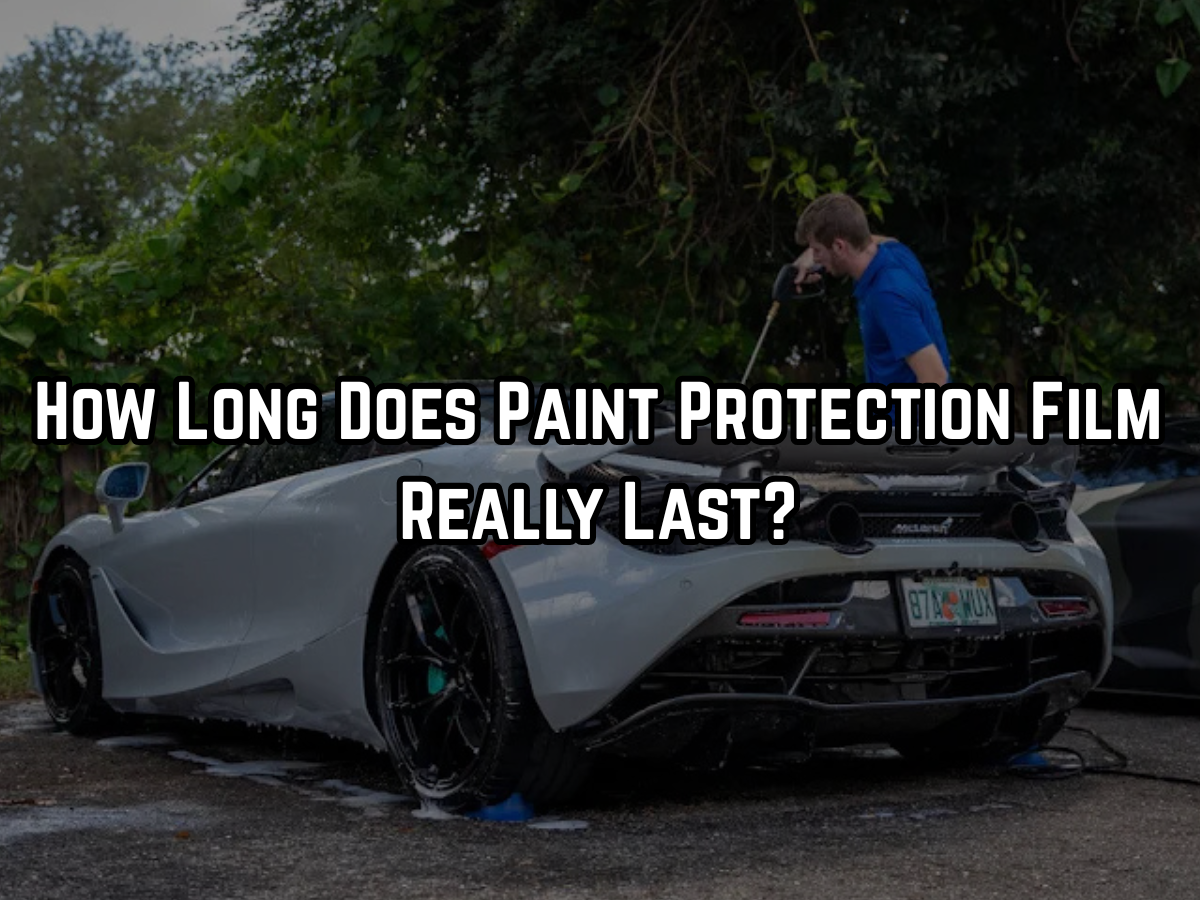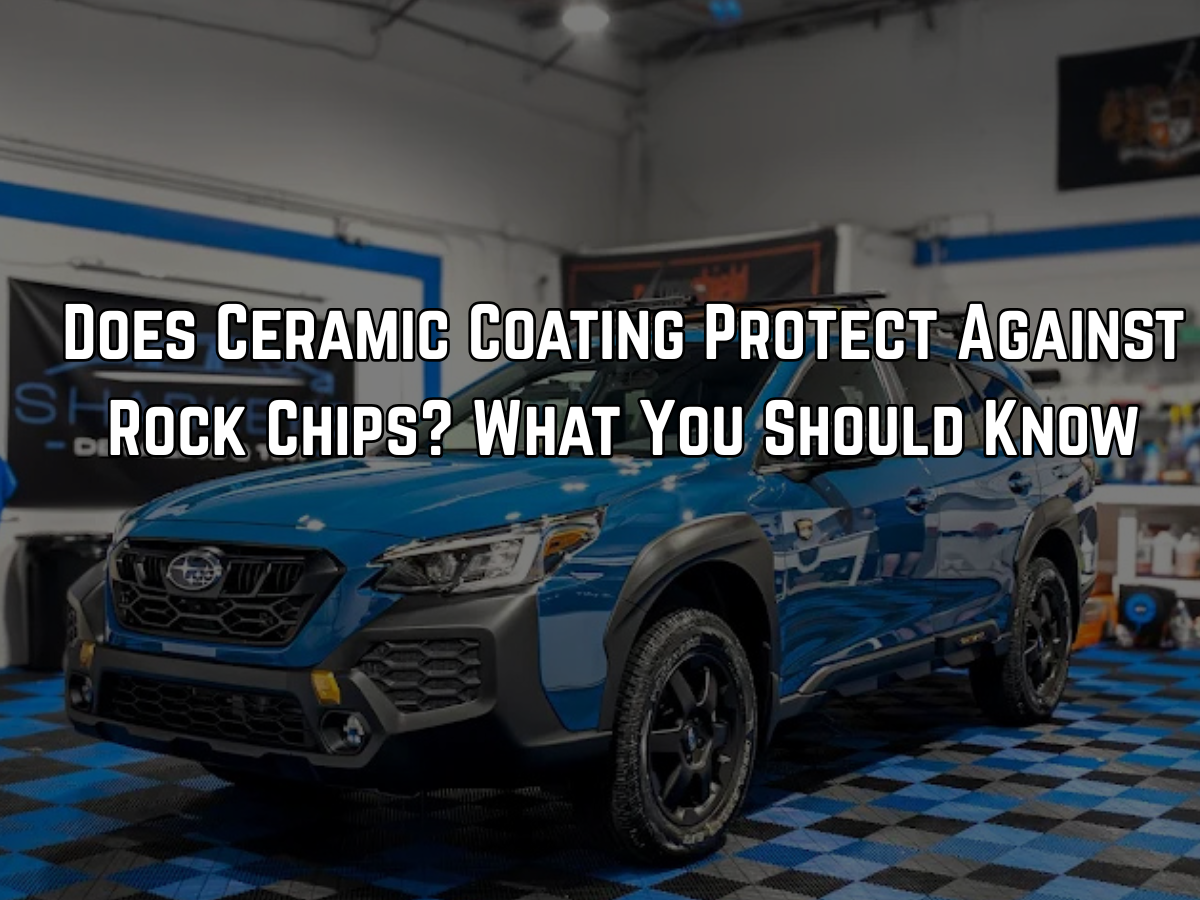Paint Protection Film For Cars – Is it Worth It?
Paint protection film (PPF) has become increasingly popular among vehicle owners looking to preserve their car's appearance and value. But with any automotive investment, the question remains: is it actually worth it?
Yes, paint protection film is worth it for most car owners. PPF provides superior defense against scratches, stone chips, UV damage, and environmental hazards while maintaining your vehicle's resale value. Paint Protection Film typically lasts between 5 to 10 years, making it a long-term investment in your vehicle's protection.
Key Takeaways
- PPF shields against road debris, scratches, and UV rays
- High-quality films can last up to 10 years with proper care
- Protects resale value by maintaining pristine paint condition
- Self-healing properties repair minor scratches automatically
- Transparent design preserves your car's original appearance
What Is Paint Protection Film?
Paint protection film is a transparent, thermoplastic urethane material applied directly to your vehicle's painted surfaces. Originally developed for military aircraft and helicopters to protect against debris damage, PPF has evolved into a sophisticated automotive protection solution.
The film acts as an invisible shield, absorbing impact from road debris while maintaining the original look of your paint. Modern PPF technology includes self-healing properties, meaning minor scratches disappear when exposed to heat from the sun or warm water.
The Growing PPF Market: Numbers That Matter
The global paint protection film market size was estimated at USD 502.55 million in 2024 and is projected to reach USD 726.63 million by 2030, indicating strong consumer confidence in the technology. This growth reflects the increasing recognition of PPF's value proposition among vehicle owners worldwide.
Benefits of Paint Protection Film
Physical Protection
PPF safeguards your vehicle from scratches, chips, and other physical damage caused by flying debris, such as rocks, gravel, and other objects encountered during daily driving. The film absorbs impact energy that would otherwise damage your paint.
UV Ray Defense
Prolonged sun exposure causes paint to fade, oxidize, and lose its vibrant appearance. PPF contains UV inhibitors that block harmful rays, preventing color degradation and maintaining your car's showroom appearance.
Chemical Resistance
Environmental contaminants like bird droppings, tree sap, and acid rain can permanently stain or etch your paint. PPF creates a protective barrier that prevents these substances from reaching the paint surface.
Self-Healing Technology
Minor scratches and swirl marks in the film disappear through self-healing technology. When heated by sunlight or warm water, the film's molecular structure reforms, eliminating surface imperfections.
How Long Does PPF Last?
On average, a good PPF that is installed by a professional will last anywhere between 5 to 10 years, as long as it is maintained and looked after. Users have even reported successes in maintaining the integrity of PPF at 10-12 years, emphasizing that consistent care and proper maintenance play a monumental role in sustaining its life.
Several factors influence PPF longevity:
Environmental Conditions: Extreme temperatures, frequent sun exposure, and harsh weather reduce film lifespan.
Driving Habits: Highway driving exposes vehicles to more debris impact than city driving.
Maintenance Quality: Regular washing and proper care extend film life significantly.
Installation Quality: Professional installation ensures proper adhesion and longevity.
Areas to Protect
The most vulnerable areas of your vehicle benefit most from PPF application:
Front Bumper: Takes the brunt of road debris impact during driving.
Hood: Large surface area exposed to stones, bugs, and environmental damage.
Side Mirrors: Small but expensive parts frequently damaged by debris.
Door Edges: High-wear areas prone to chips and scratches.
Headlights: Expensive components that benefit from impact protection.
Rocker Panels: Low areas that encounter road spray and debris.
PPF vs. Other Protection Methods
Ceramic Coatings
Ceramic coatings provide excellent protection against chemical contaminants and UV rays, but offer minimal physical protection against scratches and chips. Many owners combine both technologies for comprehensive protection.
Car Wax and Sealants
Traditional wax and paint sealants protect against minor environmental damage but require frequent reapplication and provide no impact protection.
Vinyl Wraps
While decorative vinyl can provide some protection, it lacks the optical clarity, self-healing properties, and durability of purpose-built PPF.
Installation Considerations
Professional installation is crucial for PPF performance and longevity. Skilled installers use computer-cut patterns specific to your vehicle model, ensuring precise fit and complete coverage without visible edges or bubbles.
The installation process typically takes one to three days, depending on the coverage area and vehicle complexity. Quality shops provide climate-controlled environments to prevent contamination during application.
Maintenance Requirements
PPF requires minimal maintenance beyond regular vehicle care:
Washing: Use pH-neutral car wash soap and avoid automatic car washes with brushes.
Drying: Use clean microfiber towels or forced air to prevent water spots.
Inspection: Regularly check for edge lifting or contamination buildup.
Professional Cleaning: Annual professional cleaning removes embedded contaminants.
When PPF Makes the Most Sense
Paint protection film delivers the best value for:
New Vehicles: Maximum protection when the paint is in perfect condition.
High-End Cars: Expensive paint repairs justify the initial investment.
Daily Drivers: Vehicles facing regular road hazard exposure.
Lease Vehicles: Avoid end-of-lease paint damage charges.
Classic Cars: Preserve irreplaceable original paint finishes.
Potential Drawbacks
Initial Investment: Quality PPF installation requires a significant upfront cost.
Edge Visibility: Poorly installed film may show visible edges or lift over time.
Limited Repair Options: Damaged sections typically require complete panel replacement.
Removal Considerations: While removable, the process requires professional expertise.
Making Your Decision
Consider these factors when evaluating PPF for your vehicle:
Vehicle Usage: Daily drivers benefit more than garage-kept weekend cars.
Environmental Exposure: Vehicles in harsh climates see greater benefits.
Ownership Duration: Longer ownership periods improve return on investment.
Paint Condition: PPF works best on pristine paint surfaces.
Budget Considerations: Factor in both initial cost and long-term value retention.
The Bottom Line
Paint protection film represents a smart investment for vehicle owners prioritizing long-term paint protection and resale value retention. While the initial cost may seem substantial, the combination of physical protection, UV defense, and self-healing technology provides comprehensive coverage that traditional methods cannot match.
The growing market confidence, demonstrated by projected growth to over $700 million by 2030, reflects real-world satisfaction among PPF users. For most vehicle owners, especially those with newer or high-value cars, PPF delivers tangible benefits that justify the investment.
Whether you're protecting a brand-new vehicle or preserving a cherished classic, paint protection film offers peace of mind and long-term value that makes it worth serious consideration. The key lies in choosing quality materials, professional installation, and proper maintenance to maximize your investment's return.




